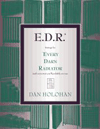
|
If you think AmazonSupply is a threat to PHCP supply houses, you “ain’t seen nothing yet.”
AmazonSupply is a supply house, stocking most of the items it sells. As of June, it sells many products that PHCP supply houses do along with a few HVACR products.
Google Shopping for Suppliers, which set up shop in February, enables manufacturers around the world to sell directly to end users around the world. No distributors need be involved, although distributors can register as suppliers. As of this writing, GSS does not have any category of products sold by PHCP supply houses, but does have a sub-, sub-category of products that some PHCP supply houses might sell.
Worse, the GSS website at www.google.com/shopping/suppliersclearly states more categories will be added, just like AmazonSupply continues to do. Because B2B end users are leery of buying from unknown sources, GSS has set up a way for sellers to be “verified” so buyers would be inclined to trust them. And to increase the level of trust, GSS enables suppliers to post a copy of GSS-verified certificates, such as ISO-9001 certification that many manufacturers have obtained to vouch for quality control in production.
This is not a new threat
“Disintermediation” is a term created in the early days of e-commerce to describe how e-commerce can eliminate distributors from the process of manufacturers selling to end users. GSS is not the first website to threaten disintermediation. Independent trading sites have been around for several years and some manufacturers who sell through distributors also have set up alias websites to sell directly to end users. It is almost impossible to determine the ownership of such around-the-distributor alias sites. With its billions in cash, GSS is the largest and most threatening trading site to come on the scene.
Right now, very few PHCP-related products can be listed on the GSS website because there are no categories under which to list PHCP products. Water meters and flow meters can be listed for sale under the sub-, sub-category “Test & Measurement, Liquid & Gas Meters,” which is not very PHCP-specific. A search for “water meter” results in a display of information for about 120 products, very few of which are the traditional in-line water meters sold by PHCP supply houses.
The scope of the threat, should Google want to set up categories for PHCP and/or HVAC products/parts, can be seen by going to
www.google.com/shopping/suppliers. Notice that there are 113 low-level categories for “Test & Measurement.” Within each low-level category, dozens or hundreds of items can be listed by each supplier. For example, under “Test & Measurement, Liquid & Gas Meters, Water Meters,” hundreds of meters and “related” products can be listed. And there can be listings from several competing manufacturers/suppliers, which means several hundred descriptions can be displayed as the result of a search. This may seem to make it difficult for an end user to find a needed product and buy it, but it isn’t.
A search on the GSS website is as simple as keying a partial product description into the search box, then scrolling through each supplier’s product name, full description, attached picture and contact information (and a supplier-optional link to the supplier’s product Web page, and/or an optional spec sheet). GSS also allows a search by optional part number and/or optional product attributes (e.g., 3/4-in. water meter), but as of this writing few product listings contain a product number or attribute. Surprisingly, pricing information is optional (as is minimum order size, whether the product is customizable, lead time, model number, dimensions and operating characteristics).
Google-verified supplier
Let’s look at how a supplier registers and gets verified and the importance of verification. The first step is for a supplier to provide Google-requested information and documents that show the supplier is registered for business (including, where applicable, company name in local language, factory office name or address and China customs registration number) and is in good financial standing (via credit information). The required information varies according to the region of the supplier: U.S., Taiwan, Hong Kong or China.
The required information is sent to a third-party verification company, which attempts to verify the accuracy of the general company information, the authorization of specific people and the supplier’s credit information. If a supplier cannot be verified, it is allowed to reapply two more times within a 12-month period. Step 2 is to pay the annual verification fee ($1,000 U.S.; $6,000 Canadian; $7,500 Hong Kong). Clearly, Google is trying to sign up Asian manufacturers/suppliers. The GSS website states that verified suppliers may in the future pay a per-transaction fee (e.g., for every view of its information, and/or for every sale made through GSS).
Step 3 involves uploading product information onto the GSS website, including defining the product’s category, subcategory, etc., as earlier described. A copy of each certification document also can be uploaded, in which case the third-party verifier attempts to validate each one. Suppliers can efficiently upload information about similar products by using a copy-and-edit feature provided by Google.
The verification process is repeated every 12 months and a new fee is due at that time. This Google policy helps maintain the level of credibility that verification implies.
Information from verified suppliers appears on the regular Google (search) website as well as in the “sponsored results” section of the GSS website, ahead of information from unverified suppliers. Information for verified suppliers also contains a colored badge, signifying verification and contains information that unverified suppliers are not allowed to provide to Google. Non-verified suppliers’ product information also appears after a GSS search, but well below the information of verified suppliers.
Is this really a threat?
Not right now, but you should pay close attention to GSS. Do not dismiss GSS. Remember that Amazon started by selling only books, and its website did not contain the features that today make it easy for buyers to quickly find and buy something.
Amazon then established AmazonSupply, which claims to sell 750,000 products, and drew upon the best features of its consumer website to create a B2B website considered one of the easiest and fastest to use. Think of GSS today as the original, primitive-website Amazon, but only selling four types of books.
As Amazon did, GSS will undoubtedly expand and add product categories and evolve its website and business practices to make it easier for sellers and end users to do business. It isn’t the breadth of GSS’ products or the specifics of its website that could pose a threat to PHCP supply houses, but its GSS’ deep pockets and commitment to evolving the disintermediation model. If GSS sets up categories for PHCP and HVACR products (e.g., faucets, residential, kitchen), how long would it be before some manufacturers of PHCP and/or HVACR products and parts bypass PHCP/HVACR supply houses to sell their products to end users?
For now, it’s a good idea for PHCP and HVACR supply houses to determine if their websites are easy for customers to use to buy products, especially products not stocked or usually shipped direct to job sites. A recent study shows that the vast majority of procurement specialists prefer suppliers who offer e-commerce, even if orders are placed by phone, fax or email.





